Key Takeaways
1. Foundational Physics Faces a Crisis of Discovery.
What failed physicists wasn’t their math; it was their choice of math.
Decades of stagnation. For over thirty years, foundational physics has been stunningly unsuccessful in finding new laws of nature beyond the Standard Model and General Relativity. Despite billions spent on experiments like the Large Hadron Collider (LHC) and dark matter detectors, expected breakthroughs haven't materialized. This lack of new data leaves theorists without empirical guidance.
Experiments yield nulls. The LHC found the predicted Higgs boson but nothing else that supports new theories like supersymmetry or extra dimensions. Dark matter and dark energy are observed gravitationally but remain unidentified microscopically, despite extensive searches for candidate particles. This experimental drought highlights a fundamental problem in how new theories are being developed.
Confusion and disillusionment. Many physicists, including the author and her colleagues, express confusion and disillusionment. The expectation that new physics must appear at accessible energies, often based on theoretical preferences, has been unmet. This raises questions about the validity of the criteria used to guide research in the absence of data.
2. Beauty, Not Just Data, Guides Modern Theorists.
Lost in Math is the story of how aesthetic judgment drives contemporary research.
Aesthetic criteria abound. In the absence of new experimental data, theoretical physicists increasingly rely on aesthetic criteria to judge the promise of new theories. Concepts like simplicity, elegance, and beauty, often formalized into mathematical requirements like symmetry and naturalness, become primary guides. This practice is deeply ingrained, passed down through generations.
Subjective yet universal? Physicists describe this aesthetic sense as a "gut feeling" or "physical intuition," sometimes claiming it's universally recognized, like appreciating art. They argue that theories feel "too good to not be true" if they possess these qualities. However, the author questions why the laws of nature should care about human aesthetic preferences, especially for phenomena far removed from direct experience.
Historical roots. The use of beauty dates back centuries, from Kepler's Platonic solids to Newton's divine harmony. While early scientists often linked beauty to divinity, modern physicists formalize it mathematically. This historical reliance, particularly its success in developing the Standard Model, reinforces the belief that beauty is a reliable guide, even when current results contradict this.
3. The "Naturalness" Criterion is an Aesthetic Bias, Not a Scientific Principle.
In summary, numbers that are very large, very small, or very close together are not natural. In the standard model, the Higgs mass is not natural, which makes it ugly.
Dislike of "ugly" numbers. A key aesthetic criterion is "naturalness," which dictates that fundamental theories should not contain dimensionless parameters that are extremely large or small, or require fine-tuning (delicate cancellation between large numbers). The Higgs boson's mass, for example, requires an unnatural fine-tuning of parameters in the Standard Model to match observations.
Formalized preference. This preference for numbers close to 1 has been formalized into "technical naturalness," particularly in quantum field theories. While presented as a mathematical principle, the author argues it's fundamentally an aesthetic one. There's no mathematical reason why parameters shouldn't be large or small; the discomfort arises from a human dislike of seemingly arbitrary coincidences.
A circular argument. The argument that unnatural numbers require explanation often relies on an implicit assumption of a uniform probability distribution for parameters. However, choosing this distribution is itself an arbitrary, aesthetic choice. The author contends that if we accept selecting assumptions to match observations (like vacuum stability), why not accept selecting parameters? Naturalness, in this context, becomes a subjective preference dressed up in math.
4. History Shows Beauty Can Lead Physics Astray.
Aesthetic criteria work until they don’t. The most telling evidence for the ineffectiveness of experience-based aesthetic guidance may be that no theoretical physicist has won a Nobel Prize twice.
Past failures of beauty. The history of science is littered with beautiful ideas that turned out to be wrong. Examples include:
- Kepler's initial model of planetary orbits based on Platonic solids (preferred over ellipses by Galileo and others).
- Galileo's insistence on perfect circular motion for celestial bodies.
- Einstein's initial rejection of an expanding universe ("abominable") in favor of a static one with a cosmological constant.
- The steady-state model of the universe (preferred by Fred Hoyle due to "aesthetic bias") over the Big Bang.
- Vortex theory, which proposed atoms were knots in the ether, widely praised for its beauty despite lack of evidence.
Ugly truths prevailed. Conversely, some successful theories were initially considered ugly or unintuitive. Maxwell's electrodynamics lacked a mechanical model, which was the aesthetic standard of the time. Quantum electrodynamics was initially seen as "ugly and incomplete" by Dirac due to its reliance on renormalization to handle infinities. These examples suggest that aesthetic appeal is not a reliable indicator of truth.
Experience is limited. While some physicists, like Steven Weinberg, argue that aesthetic judgment is like a horse breeder's intuition refined by experience, the author counters that experience with past theories doesn't guarantee success with fundamentally new ones. The fact that no theoretical physicist has won a Nobel twice for distinct theoretical work might suggest that past successes don't reliably predict future ones based on the same guiding principles.
5. The Multiverse Emerges from Unchecked Theories and Biases.
The origin of the multiverse fad, therefore, is that some physicists are no longer content with a theory that describes observation. In trying to outdo themselves, they get rid of too many assumptions, and then they conclude we live in a multiverse because they can’t explain anything anymore.
A consequence of failed prediction. When theories like string theory or inflationary cosmology fail to predict the specific parameters of our universe, some physicists invoke the multiverse. The idea is that if a theory allows for a vast landscape of possible universes with different laws or constants, then our universe is just one realization among many. This shifts the goal from explaining why our universe is the way it is to calculating the probability of observing a universe like ours (using the anthropic principle).
Controversial and untestable. The multiverse is highly controversial, with critics calling it "dangerous to science," "theology," or "fiction." A major objection is its apparent untestability, as other universes are causally disconnected. While proponents argue some variants might leave observable traces (like bubble collisions), the vastness of the proposed multiverse makes direct verification impossible for most scenarios.
Abandoning explanation. The author argues that the multiverse arises when theorists abandon the goal of explaining observed parameters. Instead of admitting the theory is incomplete or wrong, they posit that all possible outcomes exist elsewhere. This move, often framed as a logical consequence of the math, is seen by critics as a way to avoid confronting the theory's predictive failures and a departure from the core scientific mandate of explaining observations.
6. Quantum Mechanics Works Perfectly, Yet Feels Repulsive and Unintuitive.
My own conclusion is that today there is no interpretation of quantum mechanics that does not have serious flaws.
Spectacular success, conceptual discomfort. Quantum mechanics is one of the most successful scientific theories ever, explaining phenomena from atomic structure to particle interactions with incredible precision. Yet, many physicists find its core concepts deeply counterintuitive and "repulsive." Issues include the wave function (an unobservable mathematical object), its instantaneous "collapse" upon measurement, and nonlocality ("spooky action at a distance").
Interpretations abound. The discomfort has led to numerous competing interpretations of the math, such as:
- The Copenhagen interpretation ("shut up and calculate") which avoids asking what happens between measurements.
- Psi-epistemic views (like QBism) where the wave function represents knowledge, not reality.
- Psi-ontic views (like pilot wave theory) where the wave function is real but requires a nonlocal guiding field.
- Many-worlds interpretation, where the wave function never collapses, and all possible outcomes occur in parallel universes.
- Spontaneous collapse models, which amend the theory to include a physical collapse process.
A philosophical, not empirical, debate. These interpretations yield the exact same predictions for all current experiments. The choice between them is purely aesthetic or philosophical, based on which conceptual "ugliness" one finds most tolerable (e.g., discontinuous collapse vs. infinite parallel universes). This lack of empirical distinction makes progress on understanding the "meaning" of quantum mechanics difficult, leading some to call it a "losing game."
7. Dominant Theories Like String Theory Persist Despite Lack of Evidence.
The almost irresistible beauty of string theory has seduced many theoretical physicists in recent years.
A beautiful, unproven framework. String theory, which posits that fundamental particles are tiny vibrating strings in higher dimensions, is a dominant candidate for a theory of everything, aiming to unify quantum mechanics and general relativity. Its mathematical structure is widely praised for its beauty, rigidity (few free parameters once assumptions are made), and unexpected connections (like the gauge-gravity duality and insights into black holes).
Decades without empirical support. Despite its aesthetic appeal and mathematical richness, string theory has no direct experimental evidence supporting it. Its predictions, like supersymmetry and extra dimensions, have not materialized at the LHC or other experiments. The theory also faces internal challenges, such as the vast "landscape" of possible solutions and the black hole "firewall" paradox.
Persistence despite setbacks. The continued dominance of string theory, despite decades of unconfirmed predictions and conceptual problems, is a prime example of how aesthetic criteria and community momentum can drive research in the absence of data. Proponents remain convinced of its underlying truth due to its mathematical elegance and connections, hoping that experimental evidence will eventually emerge, perhaps at much higher energies or through subtle effects.
8. Social and Cognitive Biases Distort Scientific Progress.
Scientists are human. Humans are influenced by the communities they are part of. Therefore, scientists are influenced by the communities they are part of.
Beyond the ideal. While science aims for objectivity, it is a human endeavor subject to social and cognitive biases. These biases, often beneficial in everyday life, can hinder scientific progress. Examples include:
- Confirmation bias: Seeking and interpreting information that confirms existing beliefs.
- Sunk cost fallacy: Continuing to invest in a failing project due to prior investment.
- In-group bias: Favoring members and ideas within one's own field or research group.
- Mere exposure effect: Preferring ideas simply because they are familiar or frequently repeated.
- Social desirability bias: Presenting ideas in a way that is likely to gain peer approval.
Academic pressures. The modern academic system, with its emphasis on constant publication, grant acquisition, and peer review, exacerbates these biases. Researchers are incentivized to pursue popular topics and produce results quickly, leading to:
- Increased specialization and reduced cross-field pollination.
- A decline in risky, long-term projects.
- Exaggeration of results and impact in proposals and papers.
- Conformity and resistance to unconventional ideas.
Echo chambers. These pressures can turn scientific communities into echo chambers where dominant ideas are reinforced through communal repetition, making it difficult for dissenting views or alternative approaches to gain traction, regardless of their scientific merit.
9. Lack of Experimental Guidance Makes These Biases Dangerous.
Data don’t come to us anymore—we have to know where to get them, and we can’t afford to search everywhere. Hence, the more difficult new experiments become, the more care theorists must take to not sleepwalk into a dead end while caught up in a beautiful dream.
The cost of searching. As experiments become larger, more complex, and vastly more expensive (billions of dollars and decades of effort), theorists play a crucial role in guiding where to look for new physics. This requires assessing theories based on criteria beyond existing data, making the influence of aesthetic and social biases particularly problematic.
Misguided predictions. Reliance on criteria like naturalness has led to repeated predictions for new physics at energies accessible to current experiments (like the LHC or dark matter detectors). When these predictions fail, the criteria are often re-evaluated or the theories are fine-tuned, rather than questioning the guiding principles themselves. This cycle risks sending experimentalists down unproductive paths.
A failure of self-correction. The author argues that the current situation represents a failure of science's self-correcting mechanisms. In the past, experimental results quickly challenged flawed aesthetic ideals. Now, the long delay in obtaining decisive data allows biased theoretical preferences to persist and dominate research directions, potentially leading the field into a dead end.
10. Physics Needs to Re-Embrace Testability and Question Assumptions.
Physics isn’t math. It’s choosing the right math.
Beyond aesthetic appeal. The author concludes that relying on beauty, simplicity, or naturalness as primary guides for fundamental theory development is flawed. These are aesthetic preferences, not guarantees of truth. The history of physics shows that while successful theories can be beautiful, beauty itself is not a reliable predictor of success, especially when our aesthetic sense is shaped by past, potentially incomplete, knowledge.
Return to core principles. To move forward, foundational physics must:
- Identify real problems: Focus on genuine inconsistencies or tensions with data, not just aesthetic discomforts (like fine-tuning). The quantization of gravity is a real problem; the "ugliness" of parameters is not.
- State assumptions clearly: Be explicit about the philosophical or intuitive assumptions underlying theories (e.g., naturalness, infinite reality, specific probability distributions) rather than letting them get "lost in math."
- Prioritize observational guidance: Derive testable predictions whenever possible, even from highly abstract theories. Non-empirical assessment should be a temporary necessity, not a new standard.
A call for critical self-reflection. The current stagnation is a symptom of systemic issues, including academic pressures and unchecked biases. Scientists must become more aware of their own cognitive and social influences and actively work to mitigate them. This requires fostering a culture of open criticism, supporting diverse research approaches, and ensuring that the pursuit of knowledge is not overshadowed by the pursuit of popularity or funding.
Last updated:
Review Summary
Lost in Math by Sabine Hossenfelder critically examines the current state of theoretical physics, arguing that the pursuit of mathematical beauty has led the field astray. Hossenfelder interviews prominent physicists, questioning their reliance on aesthetic criteria like symmetry and naturalness in developing theories. The book highlights the lack of experimental evidence for popular theories and the challenges facing modern physics. While some readers find the technical content challenging, many praise Hossenfelder's honest and thought-provoking approach. The book sparks important discussions about the scientific method and the future of physics research.
Similar Books
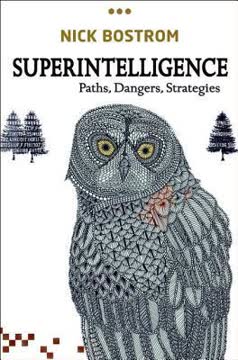


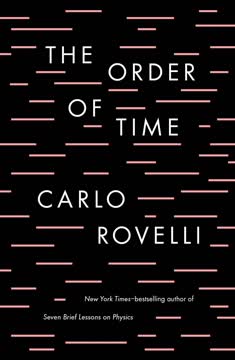
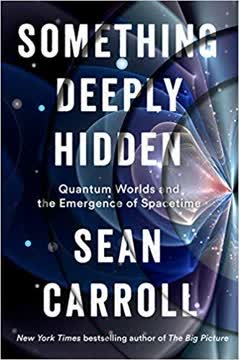
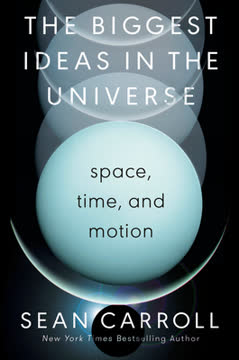


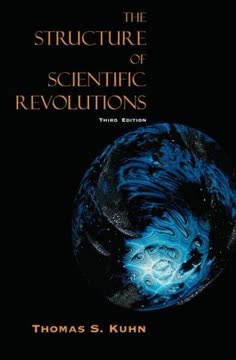
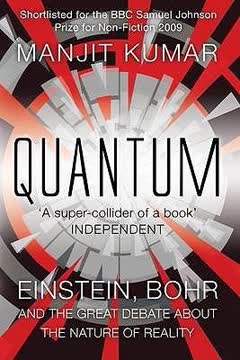
Download PDF
Download EPUB
.epub digital book format is ideal for reading ebooks on phones, tablets, and e-readers.





